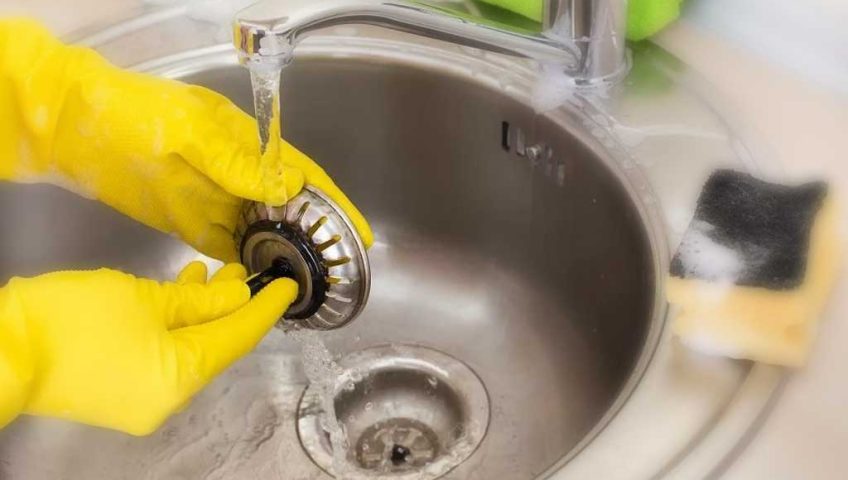Clogged drains are a common household problem that can cause major headaches. Not only are they unsightly, but they can also lead to unpleasant odors, backups, and even floods. Whether it’s your kitchen sink, bathroom shower, or laundry drain, a clogged drain can be a major inconvenience.
Luckily, unclogging drains is a simple process that anyone can do. In this article, we’ll cover everything you need to know about unclogging drains in your kitchen, bathroom, and laundry. From the supplies you’ll need to the step-by-step process, we’ve got you covered.
Supplies You’ll Need
Before we dive into the unclogging process, let’s talk about the supplies you’ll need. Here’s what you’ll need to gather:
- Plunger
- Drain snake
- Baking soda
- Vinegar
- Boiling water
- Rubber gloves
- Bucket
It’s important to wear rubber gloves when unclogging drains to protect your skin from any harsh chemicals or bacteria. You’ll also want to have a bucket on hand to catch any water that may spill out during the unclogging process.
Kitchen Drain Unclogging
The kitchen sink is one of the most frequently clogged drains in the home. Here’s how to unclog it:
Step 1: Remove Excess Water
If there’s any standing water in the sink, use a bucket or bowl to remove it.
Step 2: Use a Plunger
Place a plunger over the drain and create a tight seal. Pump the plunger up and down vigorously for several minutes. This should create enough pressure to dislodge the clog.
Step 3: Use a Drain Snake
If the plunger doesn’t work, try using a drain snake. Insert the snake into the drain and turn the handle clockwise. Keep turning until you feel resistance, then push and pull the snake to break up the clog.
Step 4: Flush with Boiling Water
Once the clog is dislodged, flush the drain with boiling water. This will help to clear any remaining debris and ensure the drain is fully unclogged.
Bathroom Drain Unclogging
The bathroom drain is another common culprit of clogs. Here’s how to unclog it:
Step 1: Remove Excess Water
If there’s any standing water in the sink or shower, use a bucket or bowl to remove it.
Step 2: Use a Plunger
Place a plunger over the drain and create a tight seal. Pump the plunger up and down vigorously for several minutes. This should create enough pressure to dislodge the clog.
Step 3: Use a Drain Snake
If the plunger doesn’t work, try using a drain snake. Insert the snake into the drain and turn the handle clockwise. Keep turning until you feel resistance, then push and pull the snake to break up the clog.
Step 4: Pour Baking Soda and Vinegar
If the plunger and drain snake don’t work, it’s time to try a chemical-free solution. Mix 1/2 cup of baking soda with 1/2 cup of vinegar and pour it down the drain. Let it sit for 30 minutes, then flush the drain with hot water.
Step 5: Use a Plumber’s Snake
If the clog is still not cleared, you may need to use a plumber’s snake. This tool can reach deeper into the drain to dislodge the clog. Insert the snake into the drain and turn the handle clockwise. Keep turning until you feel resistance, then push and pull the snake to break up the clog and solve this plumbing problem.
Step 6: Flush with Hot Water
Once the clog is dislodged, flush the drain with hot water to ensure it’s fully unclogged.
Preventing Drain Clogs
Now that you know how to unclog drains in your kitchen, bathroom, and laundry, let’s talk about how to prevent clogs from happening in the first place. Here are a few tips:
- Don’t pour grease or oil down the drain. These substances can solidify and cause clogs.
- Use a drain strainer to catch hair, soap, and other debris.
- Flush your drains with hot water once a week to prevent buildup.
- Be careful what you flush down the toilet. Only flush toilet paper and human waste.
- Avoid using harsh chemicals in your drains. They can damage pipes and harm the environment.
Conclusion
Unclogging drains may not be the most glamorous task, but it’s an essential part of kitchen, laundry, and bathroom maintenance. By following our step-by-step guide, you can keep your drains clear and avoid unpleasant backups and floods. Additionally, by practicing regular maintenance and prevention techniques, you can ensure your drains stay clear and efficient for years to come.
Remember, always wear gloves when unclogging drains, and follow the instructions carefully. If you’re not comfortable using harsh chemicals, try one of the chemical-free solutions we’ve outlined. By taking the time to unclog your drains, you’re investing in the health and safety of your home.

